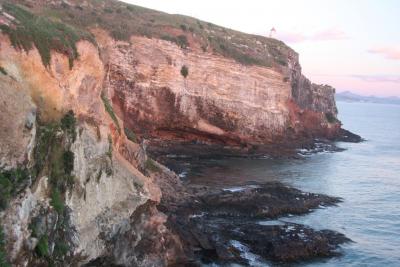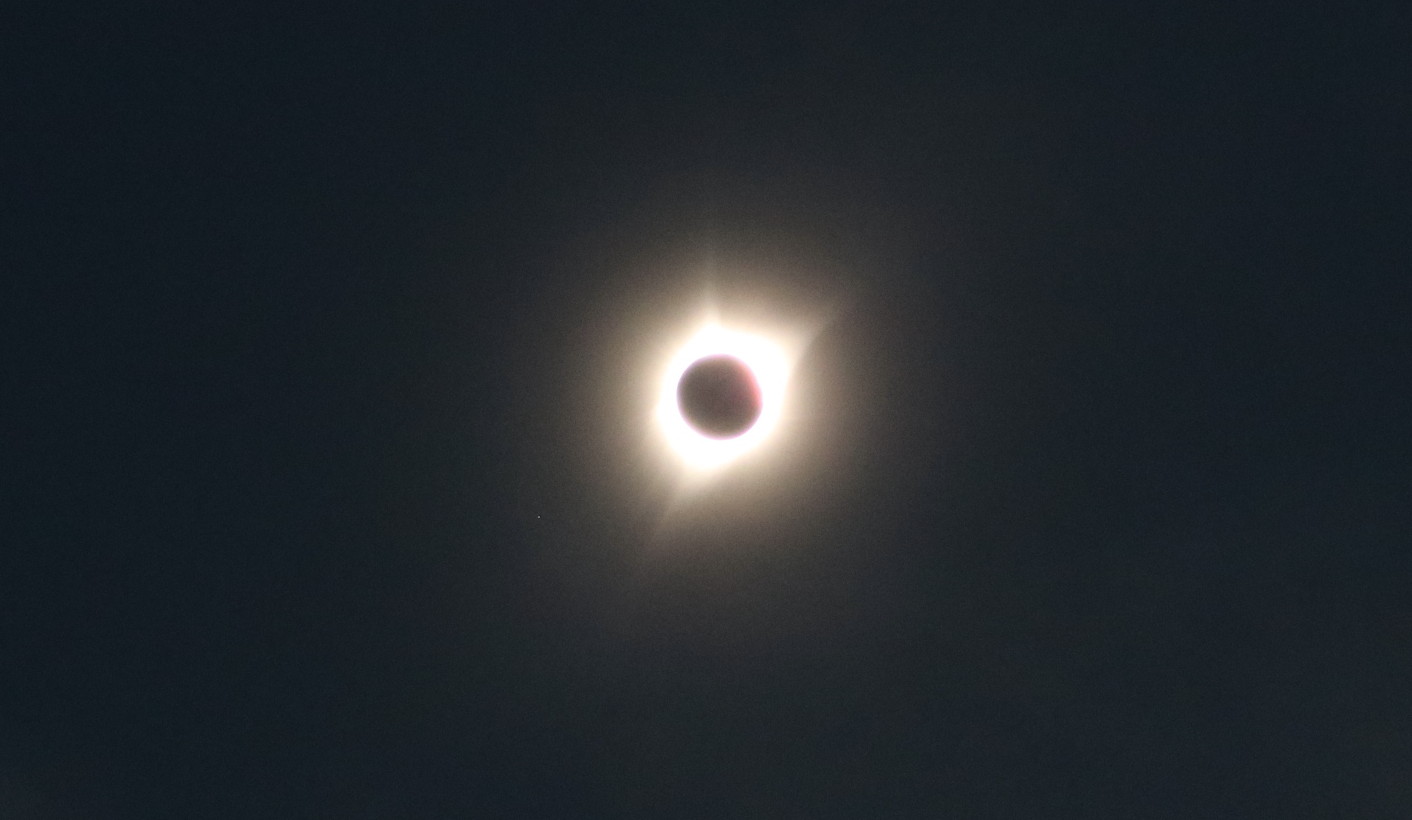The Otega Peninsula and Taiaroa Head Reserve
 By now we have learned that penguins are best seen very early in the morning as they are going from their nests to the sea or at sunset when they are returning. Leaving Dunedin we decide to give penguins another try. This time we plan to start early enough to get a good chance to see penguins on our way out of Dunedin. The Otega Peninsula extends from Dunedin to the northeast. At the far end of the peninsula is Taiaroa Head Reserve, prime territory for seeing wildlife. There are two routes to the far end of the peninsula. The high route goes more directly and the low route which follows the coastline. Our bus driver friend had suggested the same route out to the point that our guide book suggested. We would take the high route to the point and then return on the coastal route. We left the park at 5:30 a.m. which was a really good time to get through the traffic in Dunedin.
By now we have learned that penguins are best seen very early in the morning as they are going from their nests to the sea or at sunset when they are returning. Leaving Dunedin we decide to give penguins another try. This time we plan to start early enough to get a good chance to see penguins on our way out of Dunedin. The Otega Peninsula extends from Dunedin to the northeast. At the far end of the peninsula is Taiaroa Head Reserve, prime territory for seeing wildlife. There are two routes to the far end of the peninsula. The high route goes more directly and the low route which follows the coastline. Our bus driver friend had suggested the same route out to the point that our guide book suggested. We would take the high route to the point and then return on the coastal route. We left the park at 5:30 a.m. which was a really good time to get through the traffic in Dunedin.
The high route was not easy, about 20 km before we reached the point, the road narrowed to a single lane and was one curve after another. Fortunately, there was no traffic this early in the morning and we made our way to the Taiaroa Head without any problem. There are two private wildlife parks on Taiaroa Head. One is the Royal Albatross Centre and the other is Natures Wonders. The Royal Albatross Centre controls the grounds where these magnificent birds roost on the Taiaroa Head. They protect their nesting area and also control who and when visitors are allowed. So they are doing good work protecting wildlife but they also have hours of operation and collect fees from visitors. The second is a private entity, Natures Wonders, which owns the penguin colony area and also charges for visitors. As a result there is no free public access to these areas. There was a public trail with viewing platforms but these were not overlooking either of the prime wildlife areas. Neither of these areas was open when we arrived.
I walked down to the first platform which overlooked a nice area of rocks and sea cliff off to the north of the platform. After setting up the tripod and spotting scope I started scanning for any signs of wildlife. One of the first things I saw was a bush on the cliff which had about 20 little shags, the New Zealand term for cormorants. The little shag has white on its head, neck and chest in its mature plumage. This was a colony of about 12 adults and the remainder were chicks. There may have been more chicks as they didn’t show up until they lifted their heads to feed from their parents catch. The adult bird would land and then would cough up their catch to feed the young. Just like robin chicks seeking a worm from their parent, these young shags were stretching their necks to get some of the fish from their parents.
Next I spotted some seals on the rocks below. I scanned and noticed several different groups. One group was way out at the point probably a quarter mile away. There was a tidal pool and young seal pups were playing in the tidal pool as if were their private swimming pool. There were at times close to twenty pups in the pool and it was literally churning with the pups splashing, diving and jumping in the water. A couple joined me on the platform. I shared the view through the spotting scope with them. We talked and I showed them other seals and the shags. The man spoke English, his wife did not. He said his name was Jerry. He and his wife were from Peking, China. We had a wonderful conversation, he showed me pictures he had taken of penguins at a location further north. Later in the morning he returned to tell me where there was a good location to see the royal albatross flying overhead.
We drove on to Natures Wonders to see what that area would yield but it was to no avail. There were three tour buses there and their schedule was full. We would not see penguins here. The return trip along the shore was quite scenic. Reaching the mainland we turned north toward Christchurch. We stopped at a cheese factory and tasted some good cheeses. A nice conversation with Les, the cheesemaker. He told us of an area rich with wildlife, Shag Point just a few kilometers to the north. We stopped there for lunch and saw huge numbers of seals lounging on the rocks. It had been a good day for wildlife. By this time, Christchurch was out of reach for the remaining days travel. The route divided, Highway 1 to Christchurch was busy with traffic and the other route was inland so we turned inland toward the small town of Fairley.



0 Comments
Recommended Comments
There are no comments to display.
Please sign in to comment
You will be able to leave a comment after signing in
Sign In Now